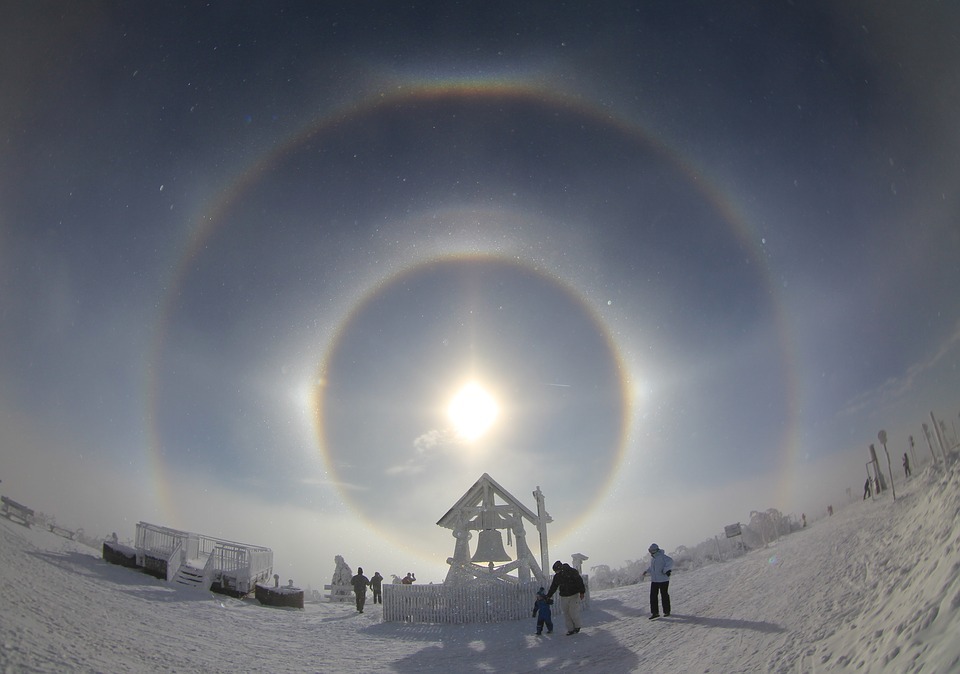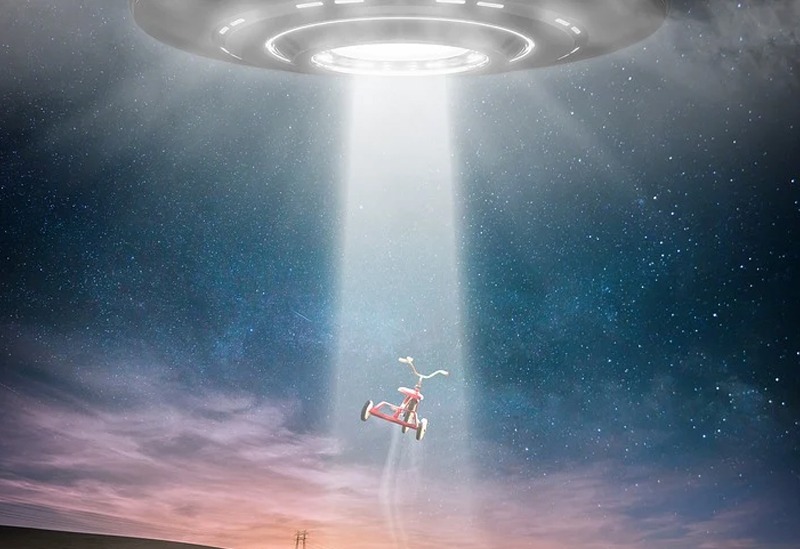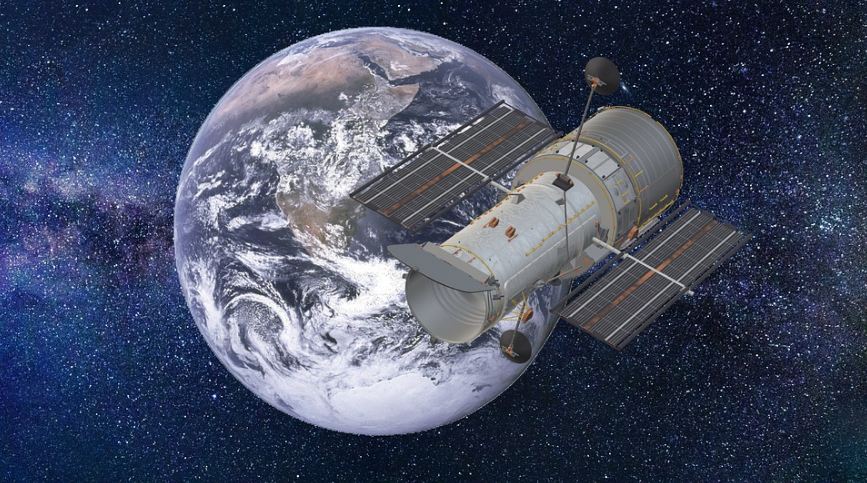Understanding Spaghettification: What Happens When Objects Fall Into a Black Hole?
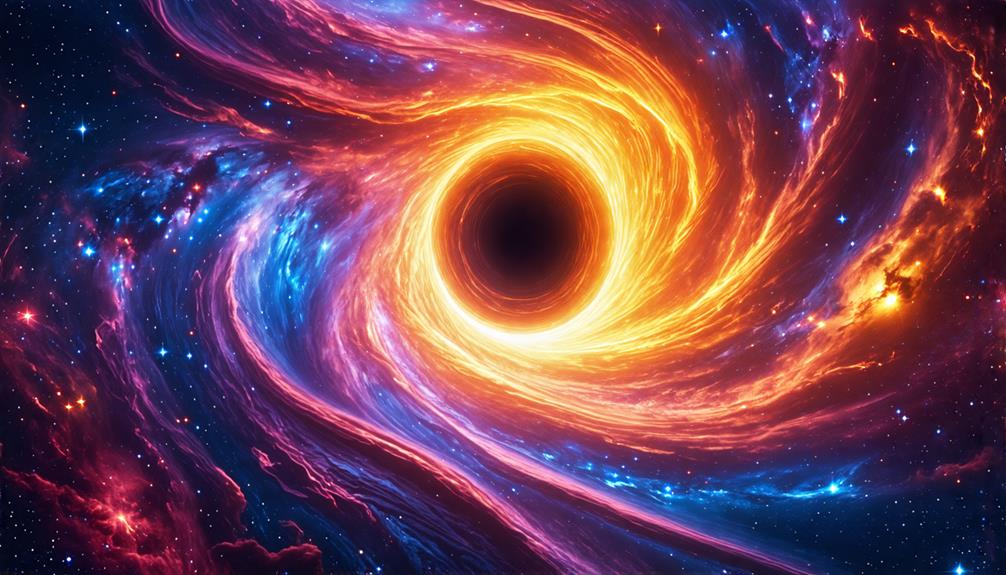
When objects venture too close to a black hole, the concept of spaghettification becomes both intriguing and alarming. As gravity intensifies, tidal forces stretch and elongate matter dramatically, leading to a surreal disintegration. This process varies between smaller and supermassive black holes, with the event horizon playing a critical role. Understanding these complexities could alter our perspective on space itself. How does this affect our view of the universe?
Overview of Black Holes
Have you ever wondered what happens when a massive star collapses under its own gravity? This catastrophic event leads to the formation of a black hole, a region in space where gravity is so strong that nothing, not even light, can escape. The boundary surrounding a black hole is called the event horizon, marking the point of no return for anything that ventures too close.
Black holes vary in size. Stellar black holes typically have masses between 5 and 50 solar masses, while supermassive black holes can weigh millions to billions of solar masses. One key concept in understanding these objects is the Schwarzschild radius, which indicates the size of the event horizon. For a solar-mass black hole, this radius is about 3 kilometers, meaning all mass must be contained within this limit.
Astronomers study black holes indirectly by observing their gravitational effects on nearby stars and gas. They often focus on the formation of accretion disks, which emit radiation detectable from Earth. These phenomena offer vital insights into the nature of black holes and the cosmic forces at play.
What Is Spaghettification?
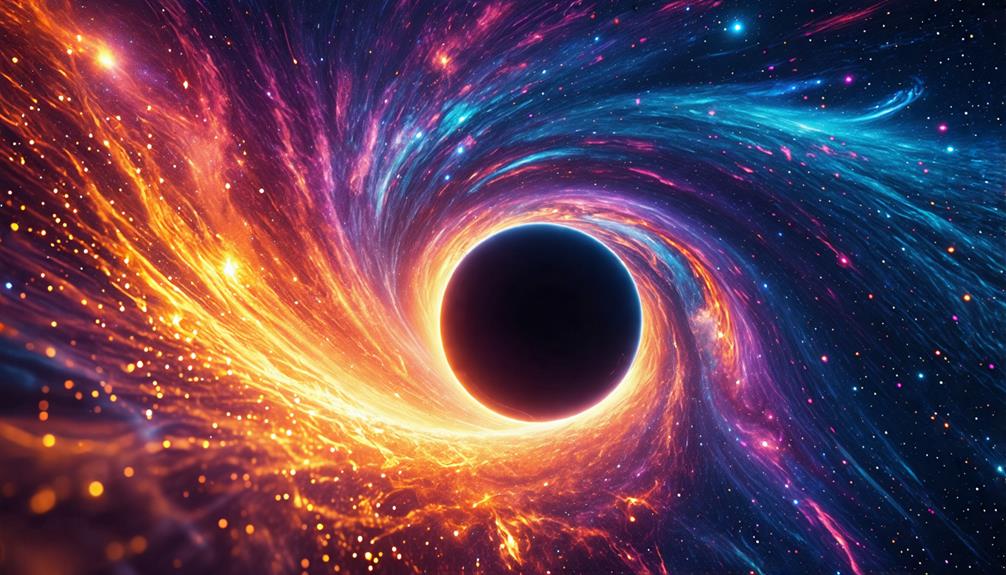
Spaghettification occurs when objects are stretched and elongated into thin shapes, much like spaghetti, due to immense tidal forces near a black hole. As you approach the event horizon, the gravitational pull on different parts of your body becomes drastically uneven. This phenomenon happens because of the following:
- Strong Tidal Forces: The closer you get to the black hole, the more pronounced these forces become.
- Irreversible Process: Once spaghettification begins, it can't be undone, leading to the destruction of the object at a molecular level.
- Variability by Black Hole Size: Smaller black holes exert stronger tidal forces, while supermassive black holes allow for a more gradual stretching.
Imagine being a 6-foot-tall human near a solar-mass black hole. You'd experience a gravitational difference about six million times that of Earth! This extreme difference results in your body being stretched to an unimaginable degree. Essentially, spaghettification illustrates the terrifying effects of a black hole's gravitational pull, showcasing how even the most solid objects become mere strands under its influence.
Mechanism of Spaghettification
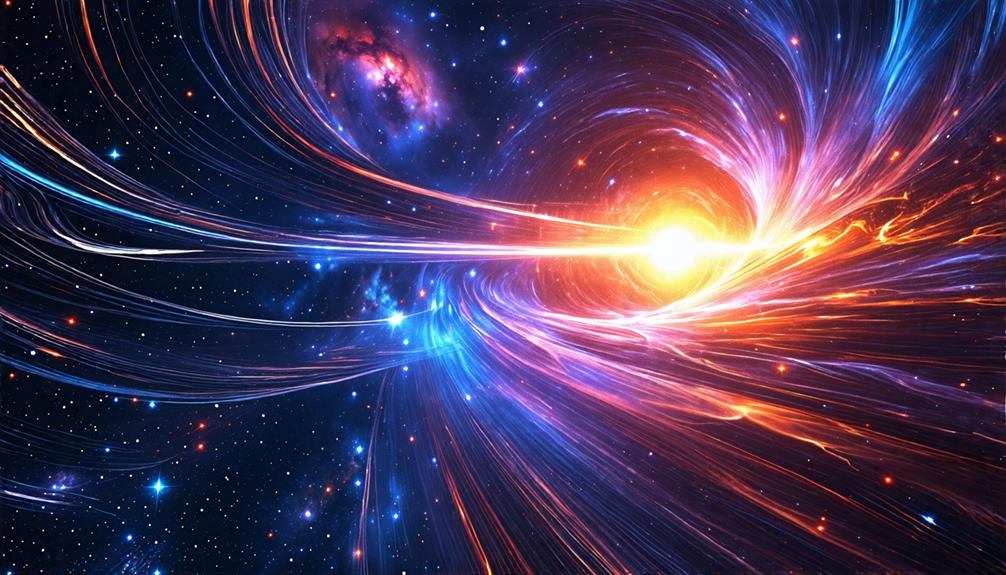
Spaghettification occurs due to the intense gravitational gradient near a black hole, which stretches objects as they approach its event horizon. As you get closer, you'd experience extreme tidal forces, with a significantly stronger gravitational pull on your feet compared to your head. This difference in gravitational force causes the elongation effect, making you resemble a spaghetti-like shape.
The gravitational gradient intensifies markedly near the black hole, leading to much stronger forces on the parts of your body closer to it. For instance, if you were to fall into a solar-mass black hole, the difference in gravitational force could be around six million times greater than what you experience on Earth when just 100 kilometers away.
Tensile strength impacts how long an object might withstand these forces. Materials with higher tensile strength can endure the tidal forces briefly longer than weaker ones, but ultimately, no material can withstand the extreme conditions near a black hole. Spaghettification is an irreversible process, resulting in the complete destruction of the object at a molecular level.
Effects of Tidal Forces
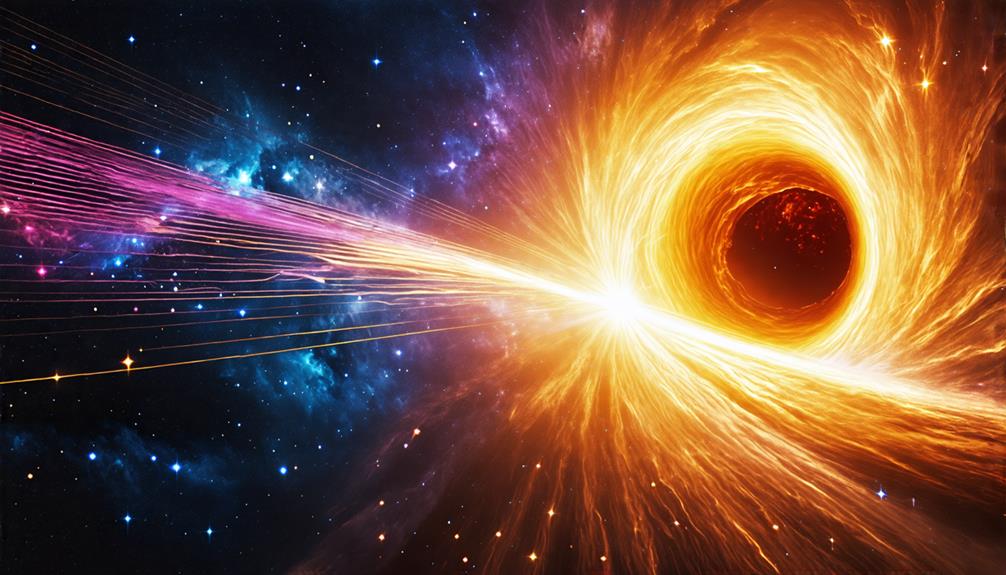
As you approach a black hole, the gravitational gradient exerts significantly different forces on various parts of your body. This differential stretching elongates you, resembling the shape of spaghetti, a phenomenon known as spaghettification. Understanding these tidal forces is crucial for grasping the severe effects this process entails.
Gravitational Gradient Impact
Tidal forces near a black hole create a dramatic gravitational gradient, pulling on different parts of an object with varying strengths, leading to potential stretching and tearing. As you approach a black hole, the gravitational pull intensifies, and this disparity can result in spaghettification. Here are three key points to consider:
- Intensity of Tidal Forces: The closer you get, the stronger the tidal forces become. For instance, a 6-foot human would experience a gravity difference approximately six million times that of Earth's near a solar-mass black hole.
- Material Strength: The tensile strength of materials is crucial. Stronger materials can withstand greater differences in gravitational pull, delaying the stretching process.
- Black Hole Size: Smaller black holes exert stronger tidal forces at closer distances, making spaghettification more likely before reaching the event horizon compared to their supermassive counterparts.
Understanding the gravitational gradient and tidal forces helps explain why objects succumb to spaghettification. The closer you get to a black hole, the more significant these effects become, leading to an inevitable and dramatic fate.
Object Length Variation
Objects stretched by tidal forces near a black hole can undergo significant elongation, with the effect intensifying as one approaches the immense gravitational field. This phenomenon, known as spaghettification, occurs because the gravitational pull on one end of an object is significantly stronger than on the other. The degree of this object length variation depends on factors such as the object's initial length, the black hole's mass, and the object's proximity to the black hole's center.
For instance, if you were 100 kilometers away from a solar-mass black hole, your 6-foot-tall body would experience a gravitational difference approximately six million times greater than that on Earth. Tidal forces can disintegrate objects well before they reach the event horizon, particularly with smaller black holes, which exhibit stronger gravitational gradients. To avoid spaghettification, it is crucial to maintain a safe distance of roughly 700 kilometers (440 miles) from a solar-mass black hole. This understanding highlights the extreme conditions near black holes and the significant risks posed by their powerful gravitational forces.
Supermassive Black Holes
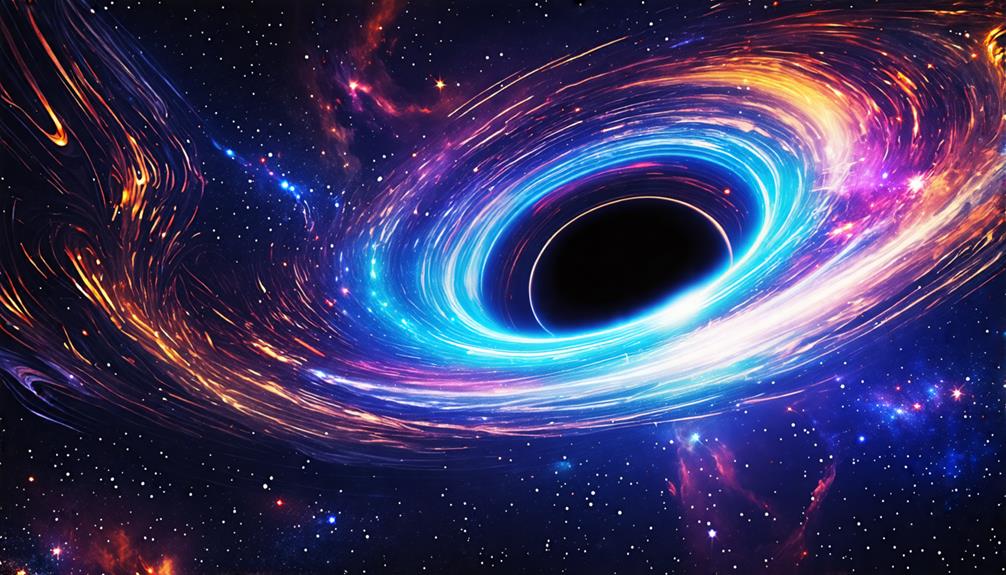
Supermassive black holes, located at the centers of galaxies, exert immense gravitational forces that affect objects falling into them in distinctive ways. Here are three key points to consider:
- Massive Scale: Supermassive black holes have masses ranging from millions to billions of solar masses, resulting in a significantly larger event horizon compared to smaller black holes.
- Weaker Tidal Forces at the Event Horizon: At the event horizon of a supermassive black hole, tidal forces are relatively weaker. This means an object might cross the event horizon intact, without immediate spaghettification.
- Gradual Gravitational Gradient: The gravitational gradient near a supermassive black hole is less severe, allowing for a more gradual transition to extreme conditions.
Approaching a supermassive black hole like Sagittarius A* in the Milky Way, which has a mass of approximately 4.3 million solar masses, might be less destructive initially. While smaller black holes pose a significant risk of spaghettification before crossing the event horizon, this phenomenon typically occurs after crossing the event horizon of a supermassive black hole. Understanding these dynamics enhances our comprehension of these celestial giants and their unique gravitational effects.
Time Dilation Near Black Holes
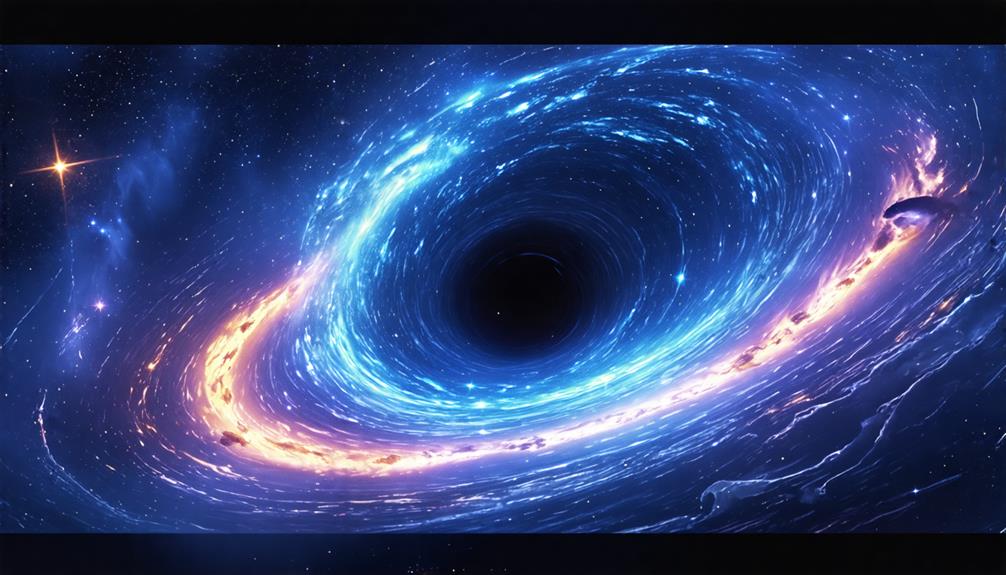
Experiencing time dilation near a black hole vividly demonstrates how intense gravitational fields can significantly alter the flow of time. As you approach a massive black hole, the gravitational force increases, causing time to pass more slowly for you compared to an observer far away. This phenomenon is a direct consequence of the effects of time dilation predicted by Einstein's theory of general relativity.
To an outside observer, your descent toward the event horizon appears to slow down, and it might even seem as though time 'freezes' for you at the edge of the black hole. However, from your own perspective, time continues to flow normally. This discrepancy raises profound questions about the nature of reality and subjective experiences of time.
Additionally, as you get closer to the black hole, any light emitted from you undergoes gravitational redshift, meaning its wavelength is stretched, reducing its energy. This effect underscores how the extreme gravitational forces near a black hole can alter not just time but also the properties of light itself. While you may experience spaghettification due to the black hole's tidal forces, the interplay between your experience of time and the perspectives of distant observers becomes increasingly complex.
Event Horizon Explained
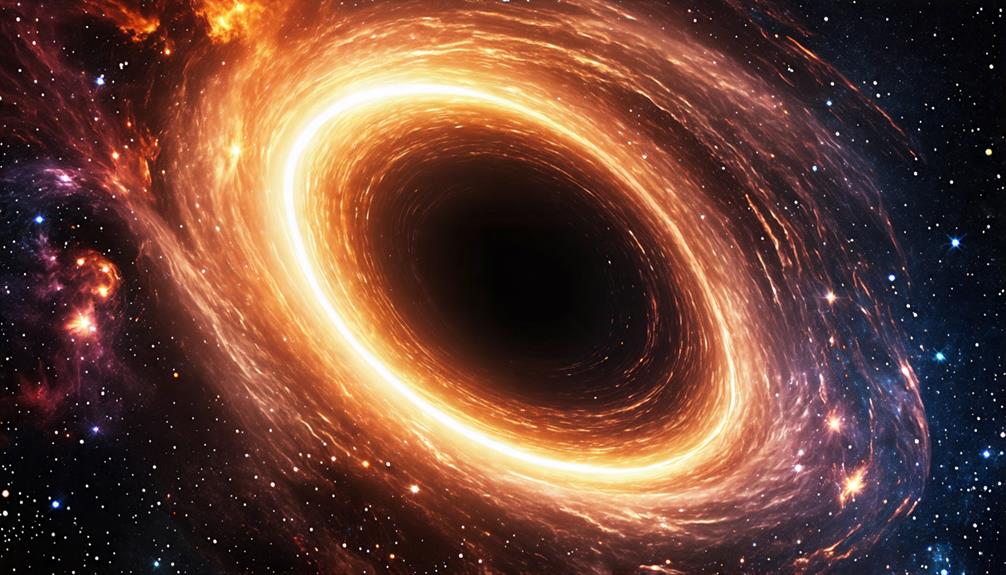
The event horizon is the critical boundary surrounding a black hole where gravity is so intense that nothing, not even light, can escape. This boundary signifies the point of no return for any object that crosses it. Key features of the event horizon include:
- Schwarzschild Radius: For a black hole with the mass of the Sun, this radius is about 3 kilometers (1.9 miles).
- Invisible Barrier: Once an object crosses the event horizon, it becomes undetectable to outside observers because no signals can escape.
- Extreme Tidal Effects: Near the event horizon, gravitational forces are so strong that they cause spaghettification, stretching and tearing objects apart.
As one approaches the event horizon, the gravitational pull intensifies, drawing everything towards the singularity at the black hole's center, a region where our current understanding of physics breaks down. Understanding the event horizon is crucial, as it encapsulates the inherent mysteries and perils of black holes, marking a transition from the known universe to the unknown.
Risks of Falling Into a Black Hole
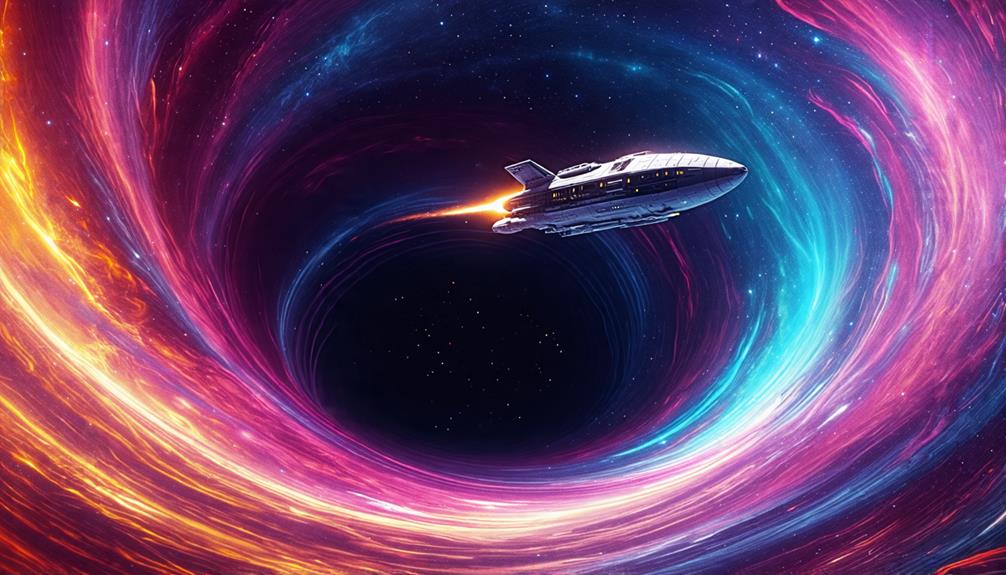
Falling into a black hole poses significant risks, primarily due to the extreme tidal forces that can stretch and tear objects apart in a process known as spaghettification. As you approach a smaller black hole, the gravitational pull varies dramatically across your body, leading to forces millions of times stronger than Earth's gravity. This immense force can disassemble you long before you even reach the event horizon. To avoid these lethal tidal forces, you would need to stay approximately 700 kilometers (440 miles) away from a solar-mass black hole.
Supermassive black holes, however, offer a somewhat less hazardous experience because their gravitational pull increases more gradually. You might cross the event horizon intact, though spaghettification could still occur as you venture deeper. In contrast, smaller black holes are inherently more dangerous due to their stronger tidal forces, which significantly increase the risk of spaghettification. Understanding these differences is crucial before considering any close encounters with these cosmic giants.
Educational Resources on Black Holes

To deepen your understanding of black holes, numerous resources are available. You can explore recommended books and scholarly articles, enroll in courses on online learning platforms, or visit planetariums and observatories for immersive experiences. Each option offers valuable insights into the complexities of black holes and phenomena such as spaghettification.
Recommended Books and Articles
Exploring the complexities of black holes can be significantly enhanced by engaging with insightful books and articles that delve into phenomena like spaghettification and its cosmic implications. Here are three recommended resources to deepen your understanding:
- 'Black Holes' by Dr. Ed Bloomer – This book offers a comprehensive overview of black hole physics, detailing the process of spaghettification and its effects on objects in strong gravitational fields.
- 'Space Exploration' by Dhara Patel – This work examines the role of black holes in the universe, with a focus on how tidal forces impact matter, including neutron stars.
- Astrophysics Journals – Research articles in these journals often present the latest findings on black holes, including the dynamics of accretion disks and gravitational redshift, enhancing your grasp of these cosmic phenomena.
Additionally, the Royal Observatory Greenwich provides valuable educational resources and interactive exhibits that explore tidal forces and spaghettification. Engaging with these materials will not only expand your knowledge but also inspire curiosity about the universe's most enigmatic objects—black holes.
Online Learning Platforms
Online learning platforms provide dynamic resources to help you grasp the complexities of black holes and the phenomenon of spaghettification. Sites like Coursera and edX offer university-level astrophysics courses that delve into the mechanics of black holes and the tidal forces contributing to spaghettification. You can access educational resources on NASA's website, which features articles, videos, and infographics explaining how black holes affect surrounding matter. These resources make complex concepts more digestible, enhancing your understanding of this fascinating field.
Virtual planetarium programs allow you to examine black hole environments, visualizing critical elements like the event horizon and accretion disks. This immersive experience clarifies how spaghettification occurs as objects approach a black hole. Additionally, online forums and discussion groups on platforms like Reddit and Stack Exchange enable you to ask questions and engage with experts and enthusiasts about black holes and related phenomena. These platforms help you deepen your knowledge and connect with others who share your interest in the mysteries of the universe.
Planetarium and Observatory Visits
Visiting a planetarium or observatory can significantly enhance your understanding of black holes and the fascinating phenomenon of spaghettification. Here are three compelling reasons to explore these educational venues:
- Immersive Experiences: Planetariums such as the Royal Observatory Greenwich offer immersive shows that visually elucidate complex concepts, including tidal forces and the event horizon of black holes.
- Interactive Exhibits: Many planetariums feature hands-on exhibits that demystify spaghettification, making the science of black holes more accessible and engaging.
- Expert Lectures: Observatories frequently collaborate with international agencies to host events where experts present the latest research on black holes, fueling your curiosity and expanding your knowledge.
These visits not only deepen your understanding of black holes but also connect you with a community of fellow enthusiasts. Additionally, resources like Dr. Ed Bloomer's book 'Black Holes' can further enrich your experience by providing detailed insights. So, take the time to visit a planetarium or observatory; you'll leave with a greater appreciation of the cosmos and its enigmatic wonders.
Conclusion
To sum up, spaghettification highlights the immense gravitational forces near black holes. As you explore this phenomenon, note how gravity stretches and tears apart objects, especially near smaller black holes. While supermassive black holes might provide a less extreme experience, the effects of tidal forces and time dilation remain compelling. By understanding these concepts, you can better appreciate the mysteries of the universe and the powerful nature of black holes. Keep exploring!


